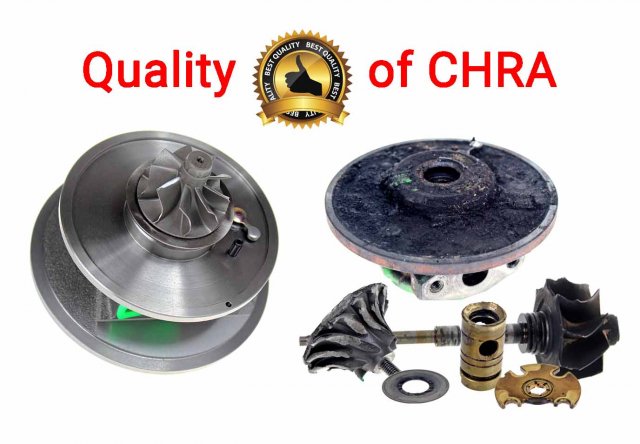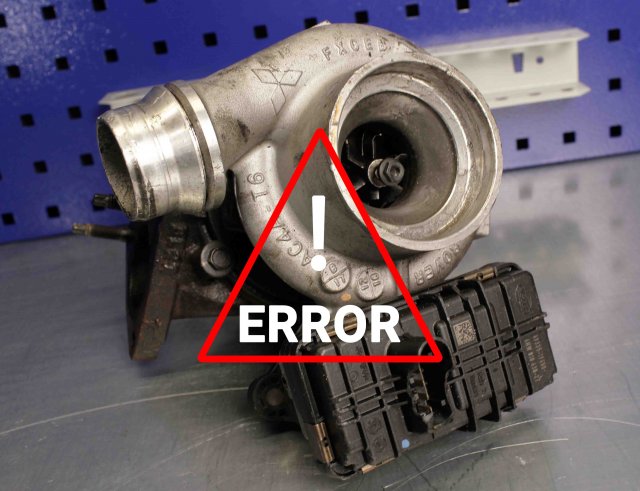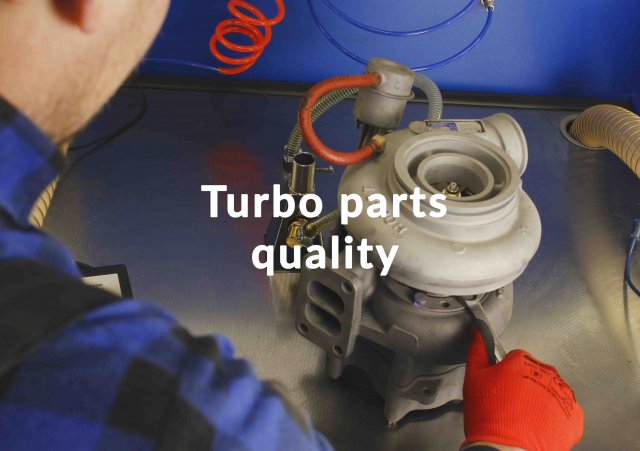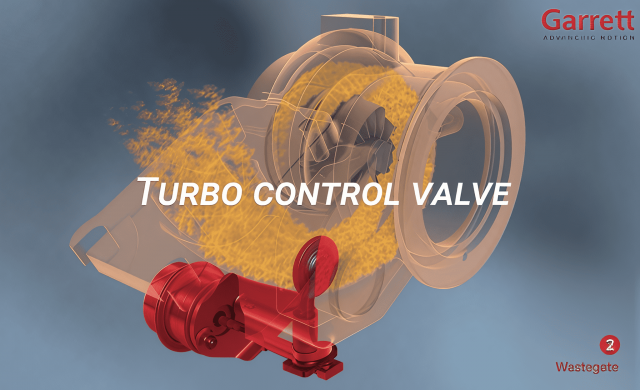Turbocharger clearance. Acceptable turbo shaft play
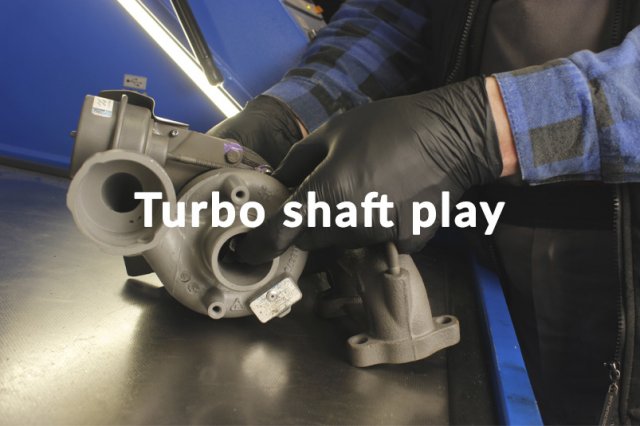
Wiatreo has been selling spare parts, repairing, and analyzing automotive turbochargers for over ten years — from Garrett and BorgWarner to Mitsubishi. That's why we cover the topic of turbocharger play based on practical experience and hundreds of completed repairs. Our mechanics measure turbine clearances daily, assessing where the line between normal and wear lies. In this material, we've gathered all the theory and explained what turbocharger play is acceptable and in which cases you should visit a service center.
Turbocharger play: what is it and how much play is permissible on the turbine shaft?
Turbocharger play in an automotive turbo is a small clearance between the shaft and bearings inside the turbocharger cartridge. It exists in every turbocharger and is considered a design norm, not a sign of malfunction. The turbo shaft rotates at speeds exceeding 150,000 RPM and is held not by rigid mounting, but by an oil film created by engine oil pressure of approximately 4.5 bar.
During operation, the shaft floats in this oil layer without touching the bearing walls or housing. The film thickness is minimal, within 3-6 microns, and this is sufficient to prevent direct metal-to-metal contact and reduce parts wear. When the engine is turned off, oil pressure drops, so the shaft shifts under gravity. This micro-moving clearance is what's called allowable turbo clearance&play.
Should There Always Be Play in a Turbocharger?
The position of the shaft in the turbocharger CHRA is slightly asymmetrical, and a small amount of rotor play is normal - the rotor is constantly exposed to the exhaust gas flow from the hot turbine housing side.
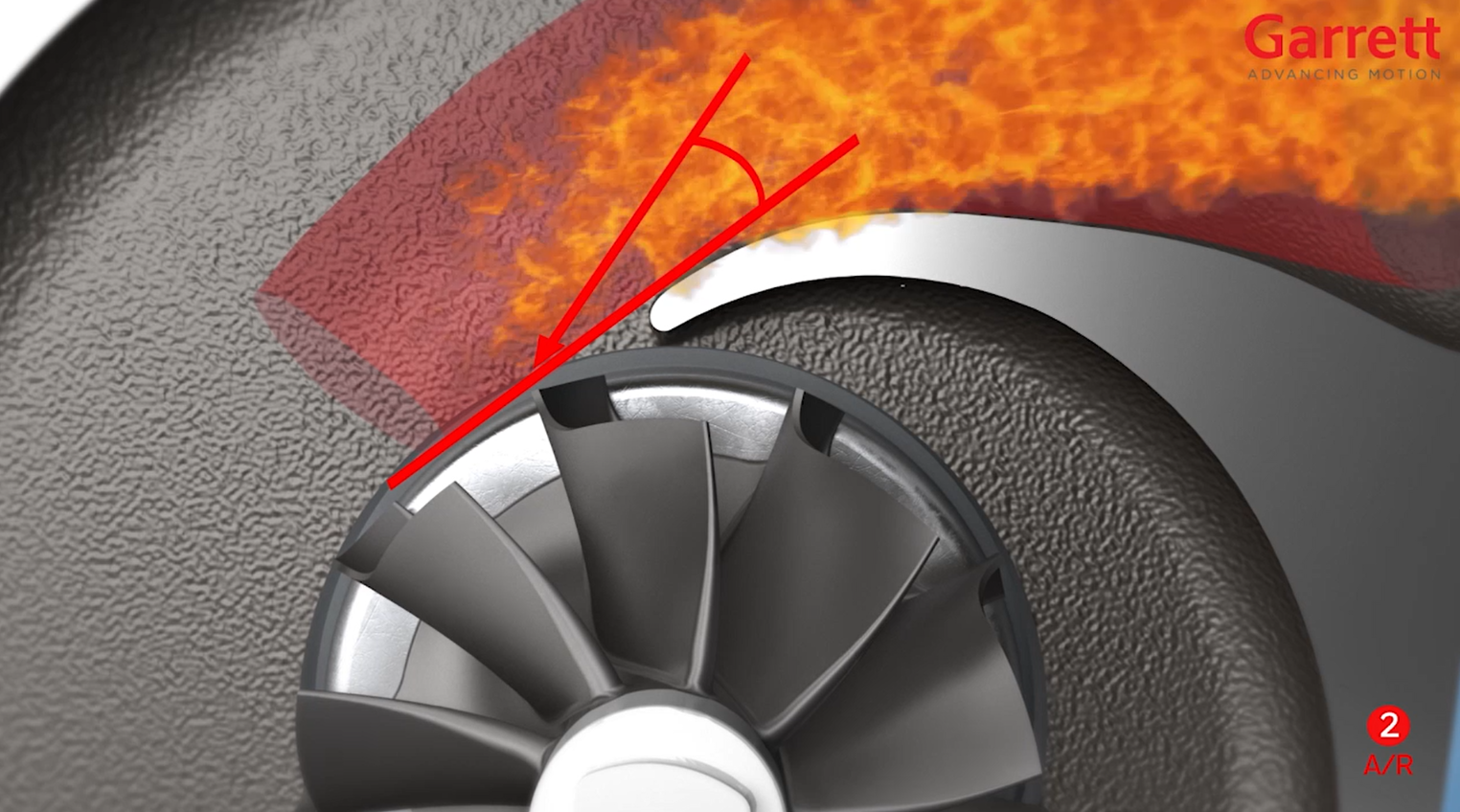
The angle at which the gas flow hits the turbine wheel creates constant lateral force, so the shaft is not placed strictly in the center of the housing. The oil film at this point forms slightly thicker, balancing the pressure and keeping the rotation axis at the equilibrium point. When the engine starts and oil pressure reaches operating level, the turbocharger radial (turbo shaft play up and down) and axial (turbo shaft movement back and forward) clearance disappears. The shaft centers itself in the oil flow and rotates without contact with the bearings. Therefore, during manual checking on a stopped engine, slight radial play is felt with fingers, but in the unit's working state, it's absent. Permissible axial clearance in turbo is designed structurally, as part of the protection and stabilization system for the rotating assembly.
Play is needed to:
- Allow the shaft to rotate with minimal friction in the cartridge (CHRA) bearing assembly of the turbocharger
- Compensate for metal micro-deformation under high operating temperatures
However, if oil pressure becomes lower than normal or its quality doesn't meet requirements, during engine operation a full oil wedge doesn't form around the shaft. As a result, the shaft isn't held in the center and touches the bushings during rotation. Intense metal-on-metal friction leads to overheating and bearing wear. The turbocharger loses balance. Therefore, slight radial or axial turbocharger play is a normal phenomenon, while its absence or increased amplitude is already a reason for diagnostics.
Design Differences in Turbochargers and Acceptable Standards of Play in Turbo Shaft
Different turbocharger manufacturers use their own engineering solutions in bearing assembly design. This determines the acceptable play in the turbocharger, its type, magnitude, and behavior during operation. There are three main types of bearings used in modern automotive turbochargers: fixed, floating, and ball bearings.
| Bearing Type | Operating Principle | Features and Play Behavior | Manufacturer Examples |
| Fixed bearings | The bearing is rigidly fixed in the cartridge housing. The shaft rotates inside the bushing. | Minimal radial play in turbo (2–3 μm). Simple and inexpensive option, but sensitive to oil quality. | Garrett (GT15, GT17, GT20 series) |
| The bearing rotates in oil together with the shaft — there's an additional oil wedge between it and the housing. | Greater range of motion (up to 5 μm). Better cooling and less wear, but higher cost. | ||
| Ball bearings |
The shaft rotates on a needle or ceramic ball bearing row. |
Practically no play, high precision and responsiveness, but high price and sensitivity to dirty or worn oil. |
IHI, Garrett Performance, Continental |
In all these designs, normal turbocharger play is incorporated from the start. Its value is determined not by wear, but by the bearing assembly design. For example, with fixed bearings the clearance is smaller because the bushing is fixed with a pin and doesn't rotate in the housing. During manual checking, it seems the shaft "sits tighter." With floating bearings, conversely, the play is slightly greater because additional space is needed for oil filling from all sides.
Why Is Less Play Not Always Better?
When a bearing is clamped too tightly, the oil film thickness decreases, temperature rises, and wear accelerates. In floating systems, the oil layer acts as a damper, reducing vibrations, cooling the assembly, and extending cartridge service life. Therefore, when comparing KKK and Garrett turbo shaft play specs, you can't rely only on the feel of play. The basis lies in the structural difference between fixed and floating bearings and their limit standards. It's important to distinguish between structural play, which is considered normal, and excessive play — arising from bearing wear or oil pressure drop.
How to Check Turbo Shaft Play and What Clearance Is Considered a Dangerous Symptoms?
Slight radial or axial turbocharger shaft play is a normal phenomenon, but if turbo shaft movement becomes noticeable along the axis or oil leakage is detected, noise appears, vibration is felt — these are direct turbo bearing failure signs.
Incorrect play means that the geometry of the cartridge bearings and bushing has been compromised, so the shaft shifts more than the design provides.
For accurate diagnostics, Wiatreo recommends measuring axial turbo and radial clearance with a dial indicator, as specified in Garrett technical specifications (or another turbocharger manufacturer). This method allows determining the actual range of shaft movement and comparing the obtained values with acceptable standards for the specific turbocharger model.
How to Distinguish Acceptable Play from Dangerous?
- Radial turbocharger play is considered acceptable. It's felt only with gentle side-to-side shaft wobbling (radially), without resistance and without contact sound.
- Turbo axial play (movement along the axis forward-backward) always indicates the beginning of wear of the entire assembly, which shouldn't normally occur. During manual checking, you can feel that the rotor doesn't just "play" in place but moves forward toward the compressor wheel, and this is a clear signal of a problem.
Signs of Incorrect Automotive Turbocharger Play
- Characteristic turbocharger whistle, intensifying during engine acceleration
- Appearance of blue smoke from the exhaust pipe — a sign that the turbocharger is passing oil into the intake or exhaust
- Oil traces in intake tract pipes or at intercooler joints
- Compressor wheel touching housing walls, causing vibration and blade chips
- Decrease in engine power and delayed turbocharger response
- Increased oil consumption without visible external leaks
- Gradual loss of rotor balance and noise during turbocharger operation
Axial Shaft Play in Turbo: Symptoms
Most often it occurs after sudden engine shutdown, when the turbocharger is still rotating but oil pressure has already dropped. A few seconds of rotation without lubrication is enough for the thrust bearing and bushing surface to begin wearing. With each start, the clearance increases and the shaft shifts more and more along the axis.
Turbocharger condition is also affected by external engine system operation. A clogged diesel particulate filter (DPF) or catalytic converter increases exhaust gas back pressure, creating additional load on the shaft. This all leads to overheating, housing deformation, and accelerates the appearance of excessive play even with a functional oil system.
If you've noticed similar signs, it's time to go to the service center and replace the turbocharger cartridge. At the same time, it's worth checking the oil system, intercooler, and pipes to be sure there are no damage consequences.
P.S.
Longitudinal turbocharger play is considered incorrect, where the shaft moves along the axis (axial clearance), accompanied by oil leakage, noise, or smoke. This is no longer structural play but the result of wear requiring immediate repair.


